The drowning rate for visitors in Hawaii is thirteen times the national average and nearly ten times the rate of residents. Snorkeling in Hawaii is the most common activity associated with these drownings.
In the past two months alone, here on Kauai, a 46 year old man died snorkeling off Wailua, a 20 year old visitor died snorkeling at Pine Trees (Hanalei Bay) and another 64 year old died at Puu Poa Beach.
While snorkeling in Hawaii on the Big Island in 2017, a woman died wearing her full face mask she purchased on Amazon. Afterwards, her husband posted a review of the product, only to have it removed. Her husband and others suspected that these masks allow for the buildup of carbon dioxide which could cause someone to pass out. Those specific masks are no longer available on Amazon, although they still sell other full face masks.
During snorkeling activity, the need for more oxygen requires us to breathe faster. With a full face mask, some of the exhaled air may not fully exit the device and it is possible to breathe in the contaminated air. That has potential to lead to unconsciousness.
Maui Fire Chief Ed Taomoto said: “Recently, we have noticed that a number of snorkel-related drownings, or, near-drownings have involved these new one-piece masks, but it is too early to make any sort of connection to the use of this equipment and drownings. We’re not sure if the increase in incidents involving these new full-face type masks is related to a problem with this design or if there [are] just more people using this type over the traditional two-piece snorkel set.”
As a result, a number of snorkel tour operators now prohibit the use of these full face masks. Snorkel Bob’s, which operates on all islands, tested the masks and said “They have been so aggressive in their marketing…. We tested it and said, no way. We won’t carry it.”
Currently, no snorkel equipment regulations exist in the U.S. Thus we suggest extreme caution in use of these masks.
What’s your experience if any with full face snorkeling masks?
Get Breaking Hawaii Travel News
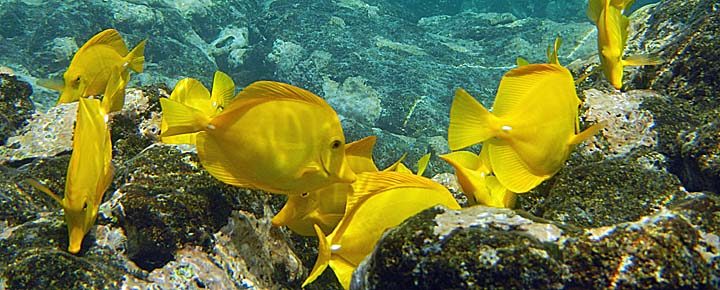

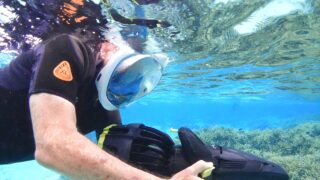
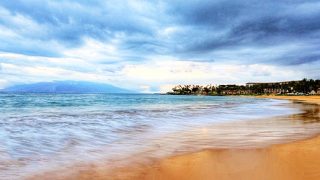
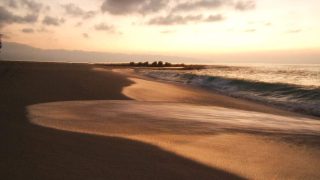
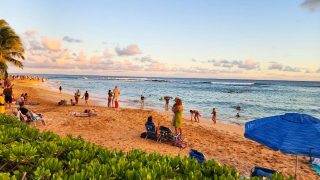
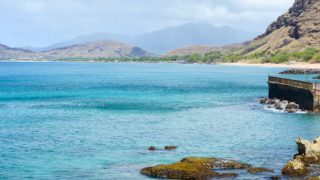
We purchased the Wildhorn Outfitters Seaview 180 full faced snorkels. We just returned from 3 weeks in Roatan, where we snorkeled almost every day, and had no issues. I did my research before purchasing. These have 2 separate chambers and 4 intake valves. They also use 1 way valves and separate breathing chamber. They had 3rd party independent testers who verified O2 and CO2 levels. These are much more enjoyable on a long snorkel trip for me than chomping down on the traditional type. I was very leary of trying these after reading some of the tragic stories. Be aware of cheap knockoffs. I would not go back, but it is a choice each person has to make. Also we never felt the need to yank off the mask to get a gulp of fresh air. If you experienced that even one time, why on earth would you continue to wear it?
CO2 buildup is a problem for any rebreathing aparatus, the problem with the full face system for inexperienced people is that the volume of air you displace shallow breathing (or breathing quickly) is not enough to pull fresh air into the face section. This is why asthmatics often have a lot of trouble, with even standard snorkling. I’m very sorry for anyone who has lost someone in this situation, everyone please be aware of these problems not just snorkling, but also using full face rebreathers for dust and chemical prevention.
Both my husband and I have Tribord full face masks and have not had much of a problem with them at all. The only real issue is if you want to dive down the mask will suction onto your face. Have not had a breathing issue unless I accidentally try to take in a breath and then the ball will lock the air intake, just have to surface and blow out and it works fine…I did research before buying and Tribord had the best reviews on snorkeling sights so that was what I went with.
Thanks for bringing up all of these important issues, including CO2 buildup, fogging and reef friendly sunscreen. I believe there should be a world wide phase out ban of reef harming sunscreen over a year or two, no linger. Our oceans are already being stressed beyond their limits.
A fogged mask seriously detracts from the quality of the underwater experience. Traditional masks are easily removed on the surface or underwater, and easily wioed clean with finger (and saliva at the surface), easily put back on. They can also be cleared of water easily by holding the top of the mask against your forehead and exhaling hard through your nostrils. Full face masks have none of these characteristics. I’ll sacrifice a mildly larger field of view a full face mask gives in order to get all of the user friendly advantages of a traditional mask, which is also smaller to carry when traveling.
A fear mongering article with no understanding of what is going on. The first full face snorkeling mask was marketed in the USA by Ocean Reef and also sold by Head Sports. Ocean Reef has been making full face masks for scuba divers for over a decade with no issue. These masks come in different sizes and must be fit properly. If your mask fogs up it DOES NOT FIT. If it doesn’t have a separate nose/mouth pocket and an eye pocket then it is a very poorly designed knock off. You may save a few bucks on Amazon but they have lots of BAD products. Have we all forgotten that ‘you get what you paid for’. Go to your local dive shop and get fitted to a quality mask.
I am not a good swimmer ad decided to be a trooper ad give snorkeling a shot as my husband enjoys this. He bought me a full face mask before we went to Kauai this May. My experience was that after a few moments the bottom of my mask filled with water up to my mouth, or else it dripped water into my eyes, we were constantly readjustingand tightening my mask. This said, for my comfort, and that I swam in very shallow and protected water I still felt more comfortable than the traditional mask. Had I been out on a tour and in deep water this would have been a significant problem for me.
Sounds like your mask did not fit your face. The good brand masks come in a few sizes. You need to be fitted. Go to a local dive shop And have them fit you. You spend a lot of money to go on vacation. Spend a few minutes to get fitted. It will be worth the extra time and money.
I have been using a full face mask for a few months now. I was wary agter reading articles about it but gave it a shot on conditions that I would ease into using it (5 minutes, then 7, then 10, then 15, etc…) and only use it in shallow water until I passed the time conditions. I started in a pool, then the lagoons out in Ko’Olina and now use it everywhere.
I have not gone past the 30 minute mark snorkeling with it on yet but I rarely go beyond 30 minutes without popping up regardless of mask. I find the mask comfortable, a better field of view and easier to use than a traditional snorkel. I also paid close attention to possible CO2 issues but have had none so far. I also do not use the full face snorkel to submerge myself/my mask as I do with a traditional snorkel set and I never swim/snorkel alone.
I do have a fair amount of time with full face masks (not snorkeling but for work). I understand the mechanics, and practiced them repeatedly prior to use, of properly removing a full face mask, which is different than a traditional mask. What I do not know are all the details of the casualties of other full face mask users. I would love to see a data set on that before we condemn the full face mask.
In short, with any new gear ALWAYS function check it, ALWAYS test it out gradually in a safe area (pool, shallow, calm lagoon, etc…), ALWAYS swim with another person and ALWAYS use gear you are comfortable with and that you have worked up to. NEVER use gear you are not confident in, NEVER use/do not use gear that you feel unsafe/uncertain in and if at any time something changes and your gut tells you to stop, STOP.
Thanks for covering this issue. It was my wife that died on the big island (actually in 2016) and caused me to raise the issue. Before then nobody paid any attention to the equipment. Many causal possibilities have been suggested: CO2 retention, leaking and other failures due to poor construction or design, rapid onset pulmonary edema, increased work of breathing, etc.. Others point to the relatively small numbers of fatalities with full face masks without considering the percentage of that pool. All I know is I’ve heard from a number of experienced snorkelers who have never encountered trouble until they tried one of these new masks.
Hi Guy.
We’re very sorry about your loss. And sincerely appreciate you checking in on this troubling issue.
Aloha.
My boyfriend and I purchased these masks on Amazon for our 13 day vacation in Maui this winter. I have to say the view and visibility is great. I recommend that anyone practice in the pool first. I don’t believe it’s carbon dioxide issue. But instead a suffication issue from my experience. You will only experience this when you lean your head too far back which causes the float ball to go up and close off your air supply causing you to panic and try to breathe harder which doesn’t allow the ball to drop down so that you can breathe. This happened to me three times before I figured out what I was doing wrong. After panicking I just took my mask off. Traditional masks allow you to blow air out and clear the water from your snorkel with this method. So people need to relearn how to snorkel. Practice in a pool first and you will see what I mean. Perhaps if the snorkel was longer might help.
I agree. We purchased our Tribords and realized that snorkeling for extended periods of time with these masks Can be problematic. When you start breathing too fast, you feel like you are suffocating.
I was on a kayak/snorkeling trip and we were swimming for a ou an hour. I had to take my mask off as we swam back to the kayaks since my fast breathing could not be accommodated with the full mask. I now know to use the traditional set up with longer trips.
A
I’ve never used one of these masks, but thank you for raising awareness for those who want to try them. I’m sorry about your late wife.
57 year old lifetime diver and surfer almost drowned when my CO level dropped to the point where my breaths were reduced to about 40 percent of normal volume. Definitely the full face mask. Very dangerous. Do not use!
The increase in people having problems with these masks is most likely due to the increase in “knock-off” versions of the original mask created by Tribord, a French company. I bought mine on a French dive boat about 5 years ago. I have used it all over the world with zero issues. MANY on Amazon and elsewhere are cheap imitations from China. DO YOUR RESEARCH before buying! There is no reason you should ever have to take it off in the water unless you find water has gotten inside. These masks are the future of snorkeling. So much better than the traditional set up.
I am a Professional scuba instructor of 14 years. I am an FII (Freediving Instructors International level 1 diver, a surfer since 1992 and an underwater photographer. To say there is no reason to remove this mask in water is ludicrous. Anybody should be able to remove their equipment, and remove their equipment with ease at any point in time. The design is a complete failure. Co2 buildup is a legitimate concern. There is ZERO way to equalize these masks, making them impossible to break the waters surface without risk of damaging the ear AND the worst issue with full face mask design is that they provide the user with a false sense of security. Nothing beats nor replaces a diving education. Money spent on a full face mask would be better spent taking a freediving or scuba certification course. On top of the issues I’ve already mentioned, I work as a snorkel guide in Waikiki and can tell you that most users that have full face masks grow frustrated with their inability to see as their lens becomes overwhelmingly foggy. Those same snorkelers then switch to a traditional mask and snorkel and are much safer and happier because they can see! Brand…Tribord…have nothing to die with the designs failures…Replace the full face mask with a full certification in freediving or scuba diving. Aloha.
My husband and I used our new full face snorkel masks in Maui two weeks ago. We loved them. We had no trouble breathing, but we will keep the CO2 problem in mind.
I bought one thinking it wouldn’t leak around my beard. Turns out it did but my gf loves it so it’s hers now.
The early models only used 1 chamber for incoming/outgoing air thus you’d intake a lot of the same co². The new style full masks now have 2 Chambers with directional valves that open/close depending on need.
I witnessed three people having trouble with these masks in PoiPu just a couple of weeks ago. I talked to two of them. They both said they’d been having trouble breathing. I recommended they exchange them for the regular snorkle/mask gear. My dive shop in CA says they only carry “Head”, the original mask of this style. They are concerned about anyone getting any other brand than “Head”.
The increase is probably due to the increase in first time snorkelers…these are the people who did not feel comfortable breathing with their mouth through a lot tube…
I tried my friend’s new full-face mask last year, on Kauai. Honestly, I couldn’t wait to get out and take it off.
It feels like you’re suffocating, and the pleasure of feeling the water on your face is gone. She was excited about her new gear, but I know it’s not for me.
i have been using full face mask for a 3 years now with no issues. you do have to remove the mask every 15 minutes or so to get in some fresh air. i only use wildhorn outfitters snorkel products . and please be aware just because you can swim theres no excuse not to use a life vest while snorkeling.
I totally agree. I have had mine for three years with out no issues
Thank you for your comment about the life vest. I wear mine every time.
I hope you will warn people not to wear reef-damaging suncreen too. The lack of retailer and tourist industry committment to this very critical cause is appalling.
Wildhorn Outfitters has developed a new design for a full face mask that is engineered around the problem of getting the CO2 out of the mask. I bought one and wore it in Maui and Kauai snorkeling in March and had no issues. I wouldn’t use the cheaper masks, but I am skeptical of blaming the masks for the drownings.